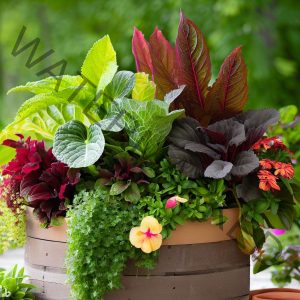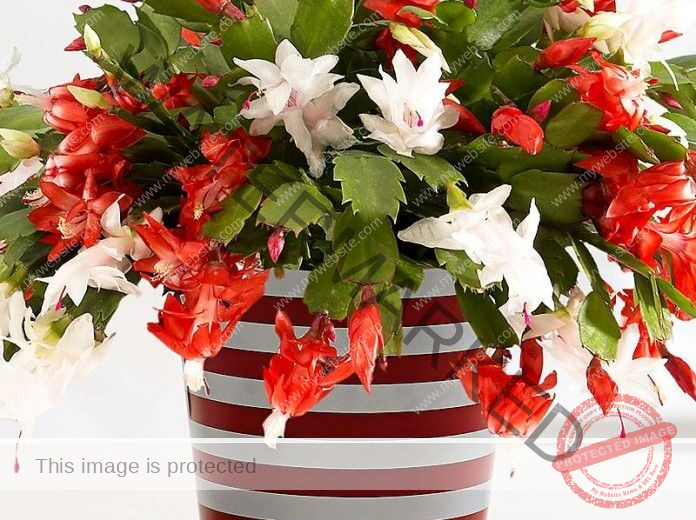Are you ready to embark on a green adventure right in your own backyard, balcony, or even on your windowsill?
Container gardening is the perfect way to unleash your inner gardener and cultivate a vibrant oasis of plants, no matter how much space you have. If you’re new to the world of gardening, fear not!
We’re here to guide you step by step on this exciting journey, from selecting the right containers to nurturing your flourishing garden.
Container Gardening for Beginners PDF [Beginner’s Book]

Step 1: Choose Your Containers
The first step in container gardening is selecting the right pots or containers for your plants. The options are endless, from traditional clay pots to colorful plastic containers and even repurposed items like old buckets or wooden crates. Just ensure that your chosen container has drainage holes at the bottom to prevent waterlogging.
Read Also: How To Grow Carrots In Container At Home Successfully [Beginners’ Guide]
Step 2: Pick Your Plants
Now comes the fun part – choosing what to plant! Whether you dream of fragrant flowers, fresh herbs, or succulent vegetables, there’s a container garden for everyone. For beginners, consider low-maintenance plants like basil, mint, cherry tomatoes, or petunias. Pay attention to your local climate and choose plants that thrive in your region.
Step 3: The Right Soil Matters
Quality soil is the key to a thriving container garden. Opt for a well-draining potting mix that’s specifically formulated for containers. It should retain moisture without becoming waterlogged, giving your plants the perfect foundation to grow.
Read Also: Best Soil Mixture for Growing Tomatoes in Containers
Step 4: Planting Your Garden
When planting your chosen greenery, make sure to follow the guidelines for spacing and depth provided on the plant’s label or seed packet. Gently loosen the root ball of your plant before placing it in the container, and cover it with soil. Water thoroughly after planting to settle the soil.
Step 5: Watering and Maintenance
Proper watering is vital for your container garden’s success. Be mindful not to overwater; instead, allow the top inch of soil to dry out before watering again. Container plants may need more frequent watering than those in the ground, so keep an eye on them during hot spells.
Read Also: Container Gardening For Plant Cultivation In South Africa
Regularly fertilize your plants with a balanced, slow-release fertilizer to provide essential nutrients. Prune dead or yellowing leaves to encourage new growth, and remove spent flowers to promote continuous blooming.
Step 6: Sunlight and Placement
Plants need sunlight to thrive, so place your containers where they’ll receive the appropriate amount of sunlight for their specific needs. Most vegetables and herbs require at least 6 hours of direct sunlight per day, while some flowering plants can tolerate partial shade.
Container Garden Plans
Container gardening offers a world of possibilities for creating stunning outdoor spaces, no matter how small your area may be. Whether you’re looking to add vibrant flowers, fresh herbs, or delicious vegetables to your landscape, having a well-thought-out container garden plan can make all the difference.
Read Also: How To Grow Cucumber In Pots & Container
Start by envisioning your ideal garden.
Do you want a colorful flower garden that attracts butterflies and hummingbirds? Are you itching to grow your own herbs for culinary adventures? Or perhaps you’re craving homegrown tomatoes and peppers for your salads? Define your goals and preferences, and then choose containers and plants that align with your vision.
Container Gardening Equipment: Tools of the Green Thumb Trade
Having the right equipment is essential to make your container gardening journey smooth and successful. Here’s a list of the basic tools and equipment you’ll need:
Containers: Choose containers with drainage holes in various sizes and materials to suit your plants’ needs.
Potting Mix: Invest in quality potting soil formulated for container gardening.
Gloves and Hand Tools: A good pair of gardening gloves and basic hand tools like a trowel and pruners will come in handy.
Watering Can or Hose: Ensure you have a reliable way to water your plants adequately.
Fertilizer: Choose a balanced, slow-release fertilizer suitable for container plants.
Stakes and Trellises: If you’re growing taller plants like tomatoes or climbing vines, you may need stakes or trellises for support.
Having these essentials on hand will make your container gardening adventure a breeze.
Best Vegetables for Container Gardening: Harvesting Flavor at Home
If you’re eager to grow your own fresh produce but have limited space, container gardening is the perfect solution. Here are some of the best vegetables for container gardening:
Tomatoes: Varieties like cherry or patio tomatoes thrive in containers.
Peppers: Bell peppers, hot peppers, and even dwarf varieties do well in pots.
Herbs: Basil, mint, parsley, and chives are excellent choices for container gardening.
Lettuce: Leafy greens like lettuce and spinach are compact and grow well in containers.
Radishes: These root vegetables are quick to mature and perfect for pots.
Cucumbers: Bush cucumber varieties are ideal for small spaces.
Remember to choose containers that provide enough space for the root systems of your chosen vegetables and provide proper support if needed.
Vegetable Container Gardening for Beginners: Green Thumbs, Unite!
If you’re new to vegetable container gardening, start with easy-to-grow crops like herbs, lettuce, and radishes. Here’s a beginner’s guide:
Container Selection: Pick containers with at least 6-8 inches of depth for most vegetables.
Potting Mix: Use high-quality potting soil and ensure containers have drainage holes.
Planting: Follow planting instructions on seed packets or plant labels.
Watering: Keep the soil consistently moist but not waterlogged.
Sunlight: Place your containers where they receive at least 6 hours of sunlight daily.
Fertilizing: Use a balanced fertilizer every 4-6 weeks during the growing season.
With a little care and attention, even beginners can enjoy a bountiful harvest from their vegetable container garden.
Outdoor Container Gardening for Beginners: Nature on Your Doorstep
Outdoor container gardening is a fantastic way to add charm and greenery to your porch, patio, or balcony. Follow these steps to get started:
Select the Right Spot: Choose a location with suitable sunlight for your plants.
Container Choice: Opt for containers that match your outdoor space’s style and have proper drainage.
Plant Diversity: Mix and match different plants for a visually appealing garden.
Watering: Check soil moisture regularly, and water when it feels dry to the touch.
Maintenance: Prune, deadhead, and fertilize as needed to keep your garden looking its best.
Embrace the beauty of outdoor container gardening and create a relaxing oasis right outside your door.
DIY Container Gardening for Beginners: Crafty Gardening Adventures
If you’re the crafty type, DIY container gardening can be an exciting project. You can repurpose various containers to create unique and personalized gardens. Get creative with:
Repurposed Containers: Use old teapots, buckets, wooden crates, or even an old shoe organizer.
Vertical Gardens: Build vertical gardens using pallets, ladders, or hanging planters.
Terrariums: Create miniature ecosystems in glass containers, perfect for succulents and air plants.
Indoor Container Gardens: Bring the outdoors inside with windowsill herb gardens or hanging planters.
DIY container gardening allows you to express your creativity while cultivating beautiful green spaces.
Conclusion
Congratulations, you’ve embarked on a fulfilling journey into the world of container gardening! Remember to choose the right containers, pick suitable plants for your climate, use quality soil, follow proper planting techniques, and provide adequate sunlight and care.
As you nurture your container garden, you’ll find immense satisfaction in watching your plants flourish and grow. It’s a rewarding experience that can be enjoyed no matter your level of gardening expertise.
If you have any questions or would like to share your own container gardening experiences and tips, please feel free to leave a comment below. Our administrators are here to read and respond to your thoughts and queries. Happy gardening! 🌱🌼🍅




